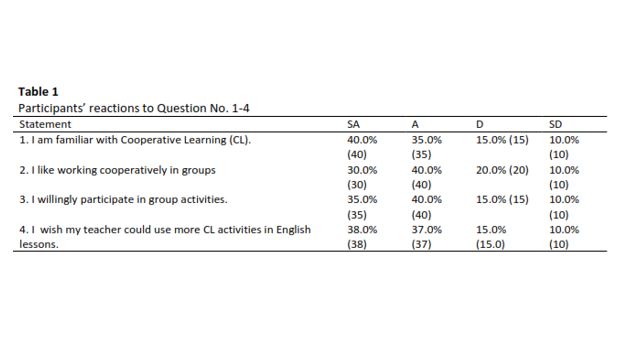Cooperative Learning in Primary ESL: What Teachers and Students Really Think!
DOI:
https://doi.org/10.37934/sijcrlhs.3.1.113Keywords:
Cooperative learning, English as a second language, primary educationAbstract
English as a Second Language (ESL) education is essential in primary classrooms where foundational language skills are developed. Cooperative learning (CL) is an instructional approach that emphasizes student collaboration, engagement, and active participation in learning. While CL is widely recognized for improving language acquisition and social interaction, its successful implementation depends on teachers’ expertise, classroom management, and students’ attitudes. However, limited empirical data explores teachers' and students' perceptions of CL in primary ESL settings. This study investigates the perspectives of primary ESL teachers and students on CL integration in language learning. A mixed-methods approach was employed, collecting qualitative interview data from four ESL teachers and quantitative survey data from 100 students (Years 4–6) in a Manjung, Perak primary school. Thematic analysis was used for qualitative data, while SPSS was used for quantitative analysis. Findings reveal that all participating teachers perceived positively towards the integration of CL in ESL classrooms. They also incorporated CL strategies, such as Think-Pair-Share, Jigsaw Reading, Role Play, Presentation, and Peer Review, in their lessons. Teachers acknowledged CL’s benefits in fostering collaboration and improving language skills but noted challenges in applying it to listening skills. Students generally perceived CL positively, preferring group-based learning over individual activities. The findings reported that CL fosters their engagement in ESL classrooms, language acquisition, and social collaboration. The study concludes that CL is an effective instructional strategy in ESL classrooms. These findings offer insights for enhancing ESL pedagogical practices and curriculum development.









